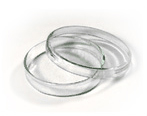- 글로벌메뉴
- KOREAN


Many mushrooms can be cultivated in a germ-free manner, and the hyphae can be cultivated by injecting spores formed in the aseptic tissue inside of fruit body or on the surface of the fruit body’s hymenium.
The live tissue, separated by a germ-free process, grows well at 24 ℃ or room temperature by inoculating it in malt extract agar (malt extract 10%, agar 2%) or yeast extract agar (yeast extract 3g, glucose 10g, K2PO4 2g, MgSO47H2O 0.2g, agar 20g, D.W. 1 liter).
Two days or a week after injection, the hyphae that proliferate around the tissue can be identified with the naked eye and further observation for several weeks is required to continuously investigate their cultural characteristics.
Some ectomycorrhizal mushrooms have extremely slow hyphae proliferation, and require up to one month of observation.
To attempt cultivation of spores, separate the spore-forming layer, such as a gill or hole, namely the hymenium section, and attach it to the inside of a petri dish lid with an adhesive such as glycerin.
Then, drop and cultivate spores by rotating the lid by 60 to 90 degrees every 10-30 minutes.
Check the petri dish for germination with a dissecting microscope, and then, when the germination is confirmed, single-spore cultivation can be performed by separating and sub-culturing single spores.